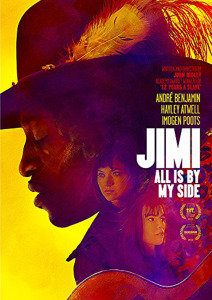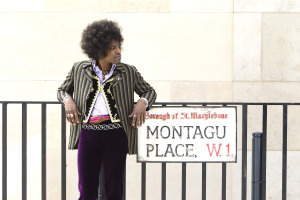
It’s hard to believe that this summer marks the 50th anniversary of the so-called “Summer of Love,” highlighted by a major explosion of influential rock acts, mind-expanding music and… oh, yeah!… there was that landmark Beatles album, SERGEANT PEPPER’S LONELY HEARTS CLUB BAND. 1967 was a watershed year for music; a year which saw the release of several important debut albums and a slew of downright great rock ‘n’ roll records.
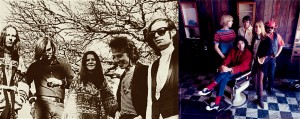
The Doors’ first album came out early in the year, along with another important first step in the psychedelic movement, as SURREALISTIC PILLOW by the Jefferson Airplane, Grace Slick’s debut with the band. The Grateful Dead followed with their first album about a month later. At the same time, the Godfathers (and Godmother) of punk and alternative rock hit the ground running with the Velvet Underground’s opening salvo. Janis Joplin got some attention as the new singer for Big Brother and the Holding Company, while a former US Army paratrooper, ex-pat who also played a little guitar released his first album, ARE YOU EXPERIENCED, as front man of the Jimi Hendrix Experience. The Beatles came out with their magnum opus, SERGEANT PEPPER’S… on the first day of June; while they were recording what many consider the greatest album of all time, a band called the Pink Floyd were also working at Abbey Road Studios, just down the hall from the Fab Four, on their first album, Syd Barrett’s psychedelic masterpiece, THE PIPER AT THE GATES OF DAWN. Late in the year, Cream, Traffic, Buffalo Springfield and the Who gave us still more great music (in the forms of DISRAELI GEARS, MISTER FANTASY, BUFFALO SPRINGFIELD AGAIN and THE WHO SELL OUT, respectively). The Monkees, the Beatles, the Turtles, Aretha Franklin, the Box Tops and Lulu all hit the top of the singles charts with unforgettable tunes throughout the year. The year 1967 was, indeed, a watershed year for pop music and the year that rock and roll grew up, expanding musical limits and young minds the world over.
PINNACLE
THE BEATLES: SERGEANT PEPPER’S LONELY HEARTS CLUB BAND

Obviously, SERGEANT PEPPER’S LONELY HEARTS CLUB BAND is the standard by which all music released in 1967 (and, in fact, in the fifty years since) is measured. The album was a big surprise when it came out… lots of folks actually thought the Beatles might be breaking up because they hadn’t released anything new since February, with the single “Strawberry Fields Forever” (and, their last album, REVOLVER, hit the streets nearly a year earlier, in early August, 1966). Ironically, the John Lennon-penned “Strawberry Fields… ,” the very first song the Lads worked on for the album, didn’t even make the final cut. SERGEANT PEPPER’S… was a true product of the great working relationship between the Beatles and their producer, George Martin, who took the band’s brilliant pop songs and grandiose ideas, molded them into a cohesive orchestral whole and just made everything work… beyond anyone’s wildest dreams. The record’s last track, “A Day In the Life,” was immediately recognized as one of the Beatles’ best and most important songs; Lennon’s dreamy vocals at the start are still as haunting as ever and Paul McCartney’s amazing bass playing stands out, as it does throughout the entire album. Over the past fifty years, the Fab Four’s eighth full-length is as well known for the amazing cover by artist Peter Blake as for the thirteen tracks found within the sleeve; the songs, the performances, the production and the visuals all gelled to make SERGEANT PEPPER’S LONELY HEARTS CLUB BAND the single most memorable moment in the annals of not only popular music, but popular culture as a whole. Rock and roll and pop music would never be the same; the rock medium, in particular, would move away from looking at an album as merely a collection of singles to a well thought-out, cohesive set of songs, sequenced to be enjoyed in its entirety. I was just thirteen years old when the record came out and, even after five decades, I still appreciate and still enjoy all the great music that came from that “Summer of Love.”
TOP OF THE POPS: FIVE ALBUMS THAT CHANGED THE LANDSCAPE OF POP MUSIC
JEFFERSON AIRPLANE: SURREALISTIC PILLOW
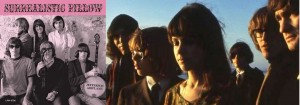
First and foremost, Jefferson Airplane’s SURREALISTIC PILLOW, their first with former Great Society singer Grace Slick, proved beyond any shadow of a doubt that a woman could rock the house down with the seminal Society leftovers, “Somebody To Love” and “White Rabbit.” Grace quickly ascended to become one of, if not THE premier rock vocalists of her time. With Slick on board, the Airplane were quite successful, both commercially and critically, for several years, while “Somebody To Love” and “White Rabbit” have become radio standards. Jefferson Airplane became one of the symbols of a new era in rock music with the psychedelic folk of SURREALISTIC PILLOW. I still enjoy listening to it.
THE VELVET UNDERGROUND AND NICO: THE VELVET UNDERGROUND AND NICO
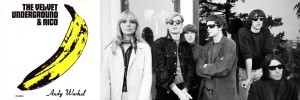
The Velvet Underground’s debut – “produced” by Andy Warhol and featuring (at Warhol’s behest) Teutonic femme fatale, Nico – didn’t really hit me until years later, but the record’s influence was very important to many of the groups that I got into in subsequent years. The original group – Lou Reed, John Cale, Maureen (Mo) Tucker and Sterling Morrison – took quite a different approach to the commercial rock scene; their avant-garde sound, highlighted by great playing became the cornerstone that indie and alternative rock would build upon in the years since. As is often said, it may not have sold many copies, but everybody that heard it wanted to start a band; were the true alternative to pop music and started an underground rock movement that continues to reverberate throughout the music world.
THE DOORS: THE DOORS
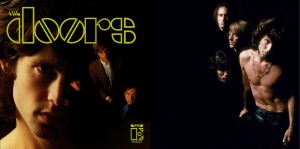
Another band that dabbled in the darker side of the musical spectrum was the Doors, perhaps darker even than the Velvets. Of course, the quartet’s first album featured the classic rock fixture, “Light My Fire,” which propelled a tragic rock god, Jim Morrison, into a larger-than-life cult figure, but it was songs like the eleven-and-a-half minute epic, “The End,” that truly defined the band. Eight months later, the group’s second record, STRANGE DAYS, cemented Morrison’s shamanistic standing with “People Are Strange,” the evil intent of “Moonlight Drive,” “Love Me Two Times” and another dark epic, “When the Music’s Over.” My favorite Doors album is actually MORRISON HOTEL from a couple of years later, but the groundwork was definitely laid on their classic first album.
THE JIMI HENDRIX EXPERIENCE: ARE YOU EXPERIENCED
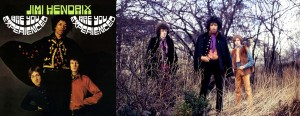
Jimi Hendrix, Mitch Mitchell and Noel Redding hit big with their debut record, ARE YOU EXPERIENCED, though I didn’t get into Hendrix until a few years later. Jimi took the world by storm, becoming rock’s big guitar hero, virtually supplanting England’s rock gods, Eric Clapton, Jeff Beck and Jimmy Page, soaring to ever greater heights in a meteoric four year career. Tragically, Hendrix, Jim Morrison and Janis Joplin, along with the Rolling Stones’ Brian Jones all passed on within a couple of years of each other (between July 1969 and July 1971), becoming the first “official” members of what would come to be known as popular music’s “27 Club.”
PINK FLOYD: THE PIPER AT THE GATES OF DAWN
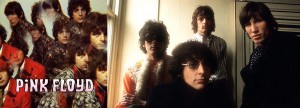
Finally, we have the first record from the Syd Barett-led Pink Floyd, THE PIPER AT THE GATES OF DAWN, a group and an album that was the impetus for the Progressive Rock movement, which would spawn such acts as King Crimson, Yes, Genesis and Emerson, Lake and Palmer, among others down the road. Oddly enough, the Floyd were recording their debut down the hall at Abbey Road Studios where the Beatles were producing their masterpiece. SERGEANT PEPPER’S LONELY HEARTS CLUB BAND was inspired by Brian Wilson and the Beach Boys’ PET SOUNDS album which, in turn, was inspired by the Beatles’ own RUBBER SOUL. How much did what John, Paul, George and Ringo were doing in that neighboring studio inspire Syd, Roger, Rick and Nick? That’s what made the music of the era so memorable… groups and artists could no longer afford to stand on their laurels, they were continually pushed by others to up their game, to progress and change. For fifty years (and counting), that has been the lasting legacy of SERGEANT PEPPER’S… .






